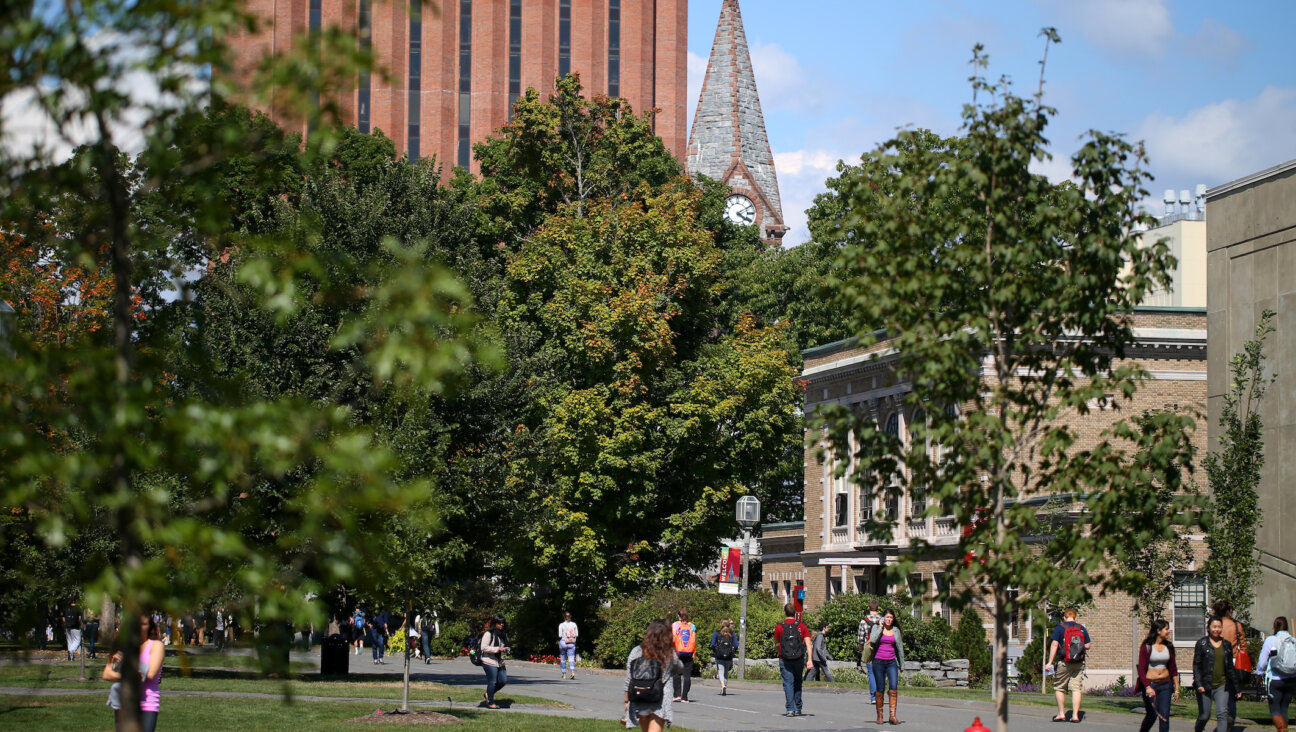Rabbi Searches Are Tough, but Are They Illegal?
As a member of my synagogue’s rabbi search committee, I was deeply troubled to learn of the rules imposed by the Rabbinical Assembly, the Conservative movement’s governing rabbinical body, on rabbinic searches. The RA requires synagogues to enroll exclusively in its search process, filters the selection of candidates the congregations may interview, and prohibits candidates and congregations from finding each other directly. Any Conservative rabbi who seeks a pulpit outside the RA’s centralized process, and any congregation that interviews candidates from other movements, will be penalized.
Such constraints were troubling to my congregation, an eclectic community that finds appeal in different Jewish denominations. These rules prohibited us from searching broadly for the spiritual leader who would best suit our community. It also troubled me that the rabbinate would sanction rabbis or congregations pursuing nontraditional paths.
But as a law professor focusing on antitrust law, I was fascinated to find an unexposed island of unequivocal antitrust violations.
American antitrust law is rooted in the Sherman Act, which Congress passed in 1890 to subject entrenched mountains of private economic power to the democratizing and equalizing forces of market competition. Although typically used to prosecute price fixing, the Act also prohibits boycotts that target challengers to an established regime. The RA’s search rules and corresponding penalties amount to the orchestration of an illegal boycott.
A rabbi who does not follow the process in lockstep and is excluded by the RA finds his or her professional livelihood in jeopardy. This enables the RA to exert complete control over the rabbinic search process, and independent-minded congregations are prevented from freely pursuing their individual needs. The RA’s centralization of power and suppression of challenges are precisely the sort of entrenched dominance that the Sherman Act is designed to remedy.
Especially troublesome is that the RA uses its domination of the search
process to pursue objectives that often are not shared by rabbis, synagogues and congregants. RA placement rules, for example, prohibit young rabbis from assuming pulpits at anything but the smallest congregations. The placement rules also prohibit congregations from extending long-term contracts to rabbis hired as “transitional” rabbis, even when those congregations and rabbis would prefer to stay together. By restricting Conservative congregations from interviewing rabbis from other movements, the rules also are designed to ward off competitive threats from independent seminaries such as Boston’s Hebrew College and denominational seminaries such as the Reconstructionist Rabbinical College. These are rules aimed to achieve full employment for RA members rather than to advance Conservative Judaism.
Although our search did not immerse us in the rules of other American denominations, it appears that the other movements employ similarly restrictive — and similarly illegal — placement systems. The Reform movement’s Central Conference of American Rabbis, which mostly draws from Hebrew Union College campuses, adheres to an assignment system whereby years of pulpit experience strictly correlate with size of synagogue and salary. If this system undermines congregational choice, then it too is likely a Sherman Act violation. The Reconstructionist Rabbinical Association and the Modern Orthodox joint placement committee also play matchmaking roles that could be illegal.
The justifications for centralizing and filtering these hiring processes lie in the belief that rabbinic leaders know, better than congregants do, who is qualified to be the rabbi. To be sure, congregations seeking new pulpit rabbis can benefit from the wisdom and experience of institutional leaders. But excuses for benevolent restrictions are a tired refrain that is all too familiar to antitrust scholars. For example, the American Medical Association famously organized cartels of doctors to boycott innovative insurers who offered early managed care plans, claiming that such health delivery systems threatened the advances of modern medicine. Local associations of lawyers, too, once believed they were entitled to establish “codes of ethics” that promulgated illegal fee schedules. Courts have soundly rejected requests by these professionals to be exempt from Sherman Act scrutiny, and those rulings have generated valuable benefits for consumers of professional services.
The inescapable conclusion is that the RA’s practices are illegal, and have been for a long time. Why have these illegal practices persisted? The history of the Sherman Act reveals that concentrated power can be difficult to dislodge. This inflexibility also reveals a systemic tragedy within Conservatism, whose history includes efforts by centralized powers to resist valuable innovations that spread across America. Such a hierarchical structure of religious authority is antithetical to the American religious experience. It is appropriately targeted by the Sherman Act, which is designed to harness the benefits of an unfettered marketplace of ideas.
My conclusion that the RA is violating the law comes with mixed emotions, as I have deep respect for a great many RA members and know the Assembly is a valuable institution for Conservative rabbis nationwide. But recognizing the illegality of the RA’s placement practices forces us to confront many of Conservative Judaism’s deepest challenges, including the critical importance of heeding the grassroots needs of Conservative Jews and the creativity of nontraditional congregations. Ultimately, conforming to the law will be good for congregations, good for the Conservative movement and it will be good for the RA as well.
Barak D. Richman is a professor of law and business administration at Duke University.
The Forward is free to read, but it isn’t free to produce

I hope you appreciated this article. Before you go, I’d like to ask you to please support the Forward.
Now more than ever, American Jews need independent news they can trust, with reporting driven by truth, not ideology. We serve you, not any ideological agenda.
At a time when other newsrooms are closing or cutting back, the Forward has removed its paywall and invested additional resources to report on the ground from Israel and around the U.S. on the impact of the war, rising antisemitism and polarized discourse.
This is a great time to support independent Jewish journalism you rely on. Make a gift today!
— Rachel Fishman Feddersen, Publisher and CEO
Support our mission to tell the Jewish story fully and fairly.
Most Popular
- 1

Fast Forward Ye debuts ‘Heil Hitler’ music video that includes a sample of a Hitler speech
- 2

Opinion It looks like Israel totally underestimated Trump
- 3

Culture Cardinals are Catholic, not Jewish — so why do they all wear yarmulkes?
- 4

Fast Forward Student suspended for ‘F— the Jews’ video defends himself on antisemitic podcast
In Case You Missed It
-

Culture How one Jewish woman fought the Nazis — and helped found a new Italian republic
-

Opinion It looks like Israel totally underestimated Trump
-

Fast Forward Betar ‘almost exclusively triggered’ former student’s detention, judge says
-

Fast Forward ‘Honey, he’s had enough of you’: Trump’s Middle East moves increasingly appear to sideline Israel
-
Shop the Forward Store
100% of profits support our journalism
Republish This Story
Please read before republishing
We’re happy to make this story available to republish for free, unless it originated with JTA, Haaretz or another publication (as indicated on the article) and as long as you follow our guidelines.
You must comply with the following:
- Credit the Forward
- Retain our pixel
- Preserve our canonical link in Google search
- Add a noindex tag in Google search
See our full guidelines for more information, and this guide for detail about canonical URLs.
To republish, copy the HTML by clicking on the yellow button to the right; it includes our tracking pixel, all paragraph styles and hyperlinks, the author byline and credit to the Forward. It does not include images; to avoid copyright violations, you must add them manually, following our guidelines. Please email us at [email protected], subject line “republish,” with any questions or to let us know what stories you’re picking up.














